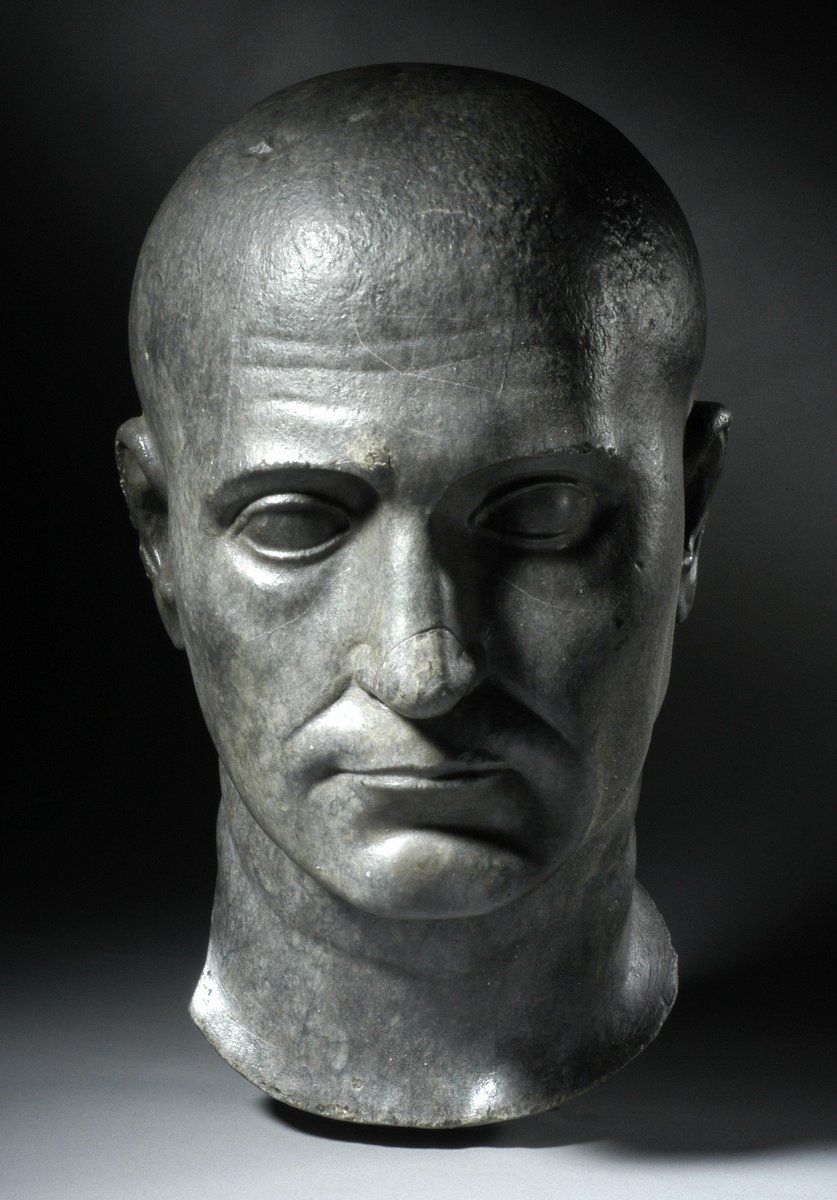A thread on Classical antiquities I& #39;ve recently found:
Limestone funerary stele with antithetical sphinxes. Pairs of opposing sphinxes were used as guardians on funerary monuments & shrines. ca. 475–450 B.C. from the Necropolis of Golgoi, Cyprus. At Met.
Limestone funerary stele with antithetical sphinxes. Pairs of opposing sphinxes were used as guardians on funerary monuments & shrines. ca. 475–450 B.C. from the Necropolis of Golgoi, Cyprus. At Met.
Shaft from a bronze thymiaterion (incense burner) decorated with a man in Persian costume is an unusual expression of the Etruscan interest in the exotic. 5th century BC at Met.
The word Thymiatērion, derives from the Greek thymian to smoke, burn incense, from (assumed) Greek thymos, smoke (whence Greek thymos, spirit) [1]
Fragment of a marble neo-Attic relief with Peitho, the goddess & personification of Persuasion (sexual & political persuasion).She is seated on a high pillar with one hand on a dove and the other holding the edge of her himation (cloak). Roman, 1st c. B.C. at Met.
Peitho was often represented as a (persuasive/seductive) companion of Aphrodite. The above Peitho depiction was part of a decorative relief of Helen being persuaded by Aphrodite to leave her husband and go off to Troy with the Trojan prince Paris. [1]
Bronze statue of a camillus, a young attendant (acolyte) at Roman cult sacrifices. He likely held ritual objects like a container for incense in his left hand and a jug for wine. Early Imperial, Julio-Claudian ca. A.D. 14–54 at Met.
CAMILLUS [boy] CAMILLA [girl] , originally were terms used for freeborn Roman children. Later, they became attendants, especially in rites performed by the flamen Dialis. It was necessary that they should be below age of puberty, freeborn & the children of parents still alive [1]
Marble Gravestone of Alexandra, Athenian priestess of Isis shown in the guise of the goddess. Her dress& #39; central knot is characteristic of Isis cult devotees. Also her 2 ritual objects: situla [ritual bucket] & sistrum (rattle, now missing) AD 125-150, Kerameikos Cemetery, Athens
This gravestone of Alexandra, the Isis priestess is at the National Archaeological Museum, Athens [1]
The worship of Isis in Greece and the Roman world resembled the rituals of mystery cults where participants must be initiated & promised a better afterlife. Only initiates were allowed to know the secret rituals. [2]
From Apuleius & #39;Metamorphoses& #39;
(aka & #39;The Golden Ass& #39;) 2nd c. AD, we learn that Isis initiates underwent purifying baths, confessed & asked forgiveness for their sins, and dressed in linen clothing. [3]
(aka & #39;The Golden Ass& #39;) 2nd c. AD, we learn that Isis initiates underwent purifying baths, confessed & asked forgiveness for their sins, and dressed in linen clothing. [3]
In Plutarch& #39;s "Isis & Osiris" (45–120 AD) he describes in detail the significance of the sistrum (a rattle generally made of bronze) for Isis cult devotees. The sistrum& #39;s rattling sound brings forth the enduring creative force of the universe.
The English word & #39;mystery& #39; derives from the Greek μυστήριον (mustḗrion, "secret"), from μύστης (mústēs, “initiated one”), from μύω (múō, “I shut”).
That is, a mystery is for those initiates who closed their mouths, thus are sworn to silence for the mysteries revealed in rites.
That is, a mystery is for those initiates who closed their mouths, thus are sworn to silence for the mysteries revealed in rites.
Head of a Priest of Isis, Roman period 2nd century AD or later. Made of marble?, perhaps darkened for being exposed to fire- at Los Angeles County Museum of Art [1]

 Read on Twitter
Read on Twitter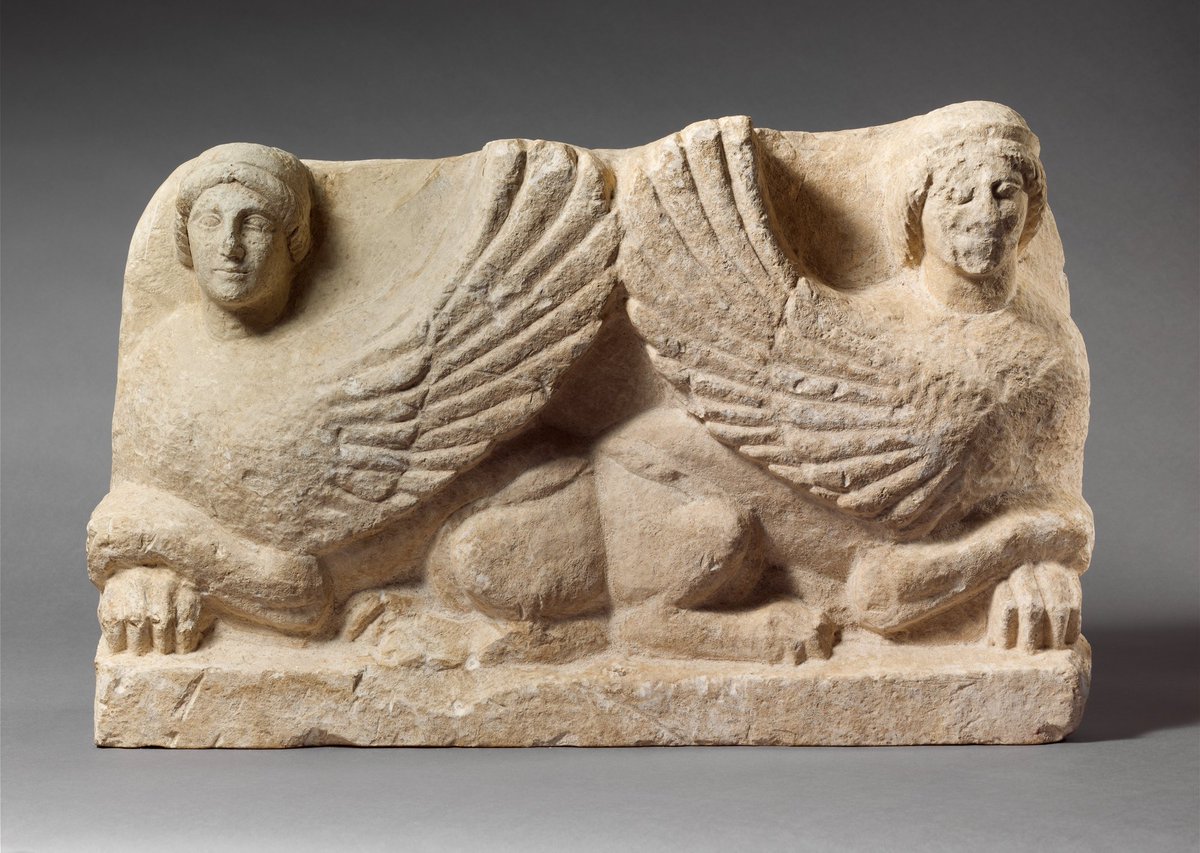


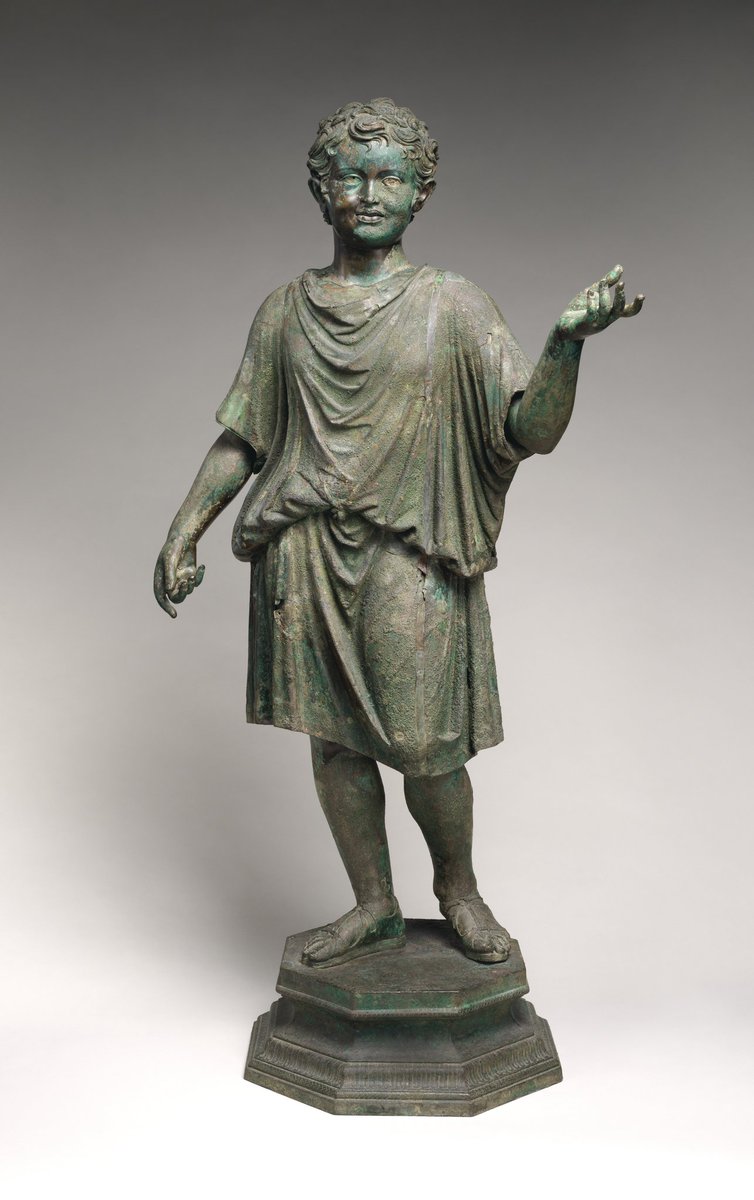
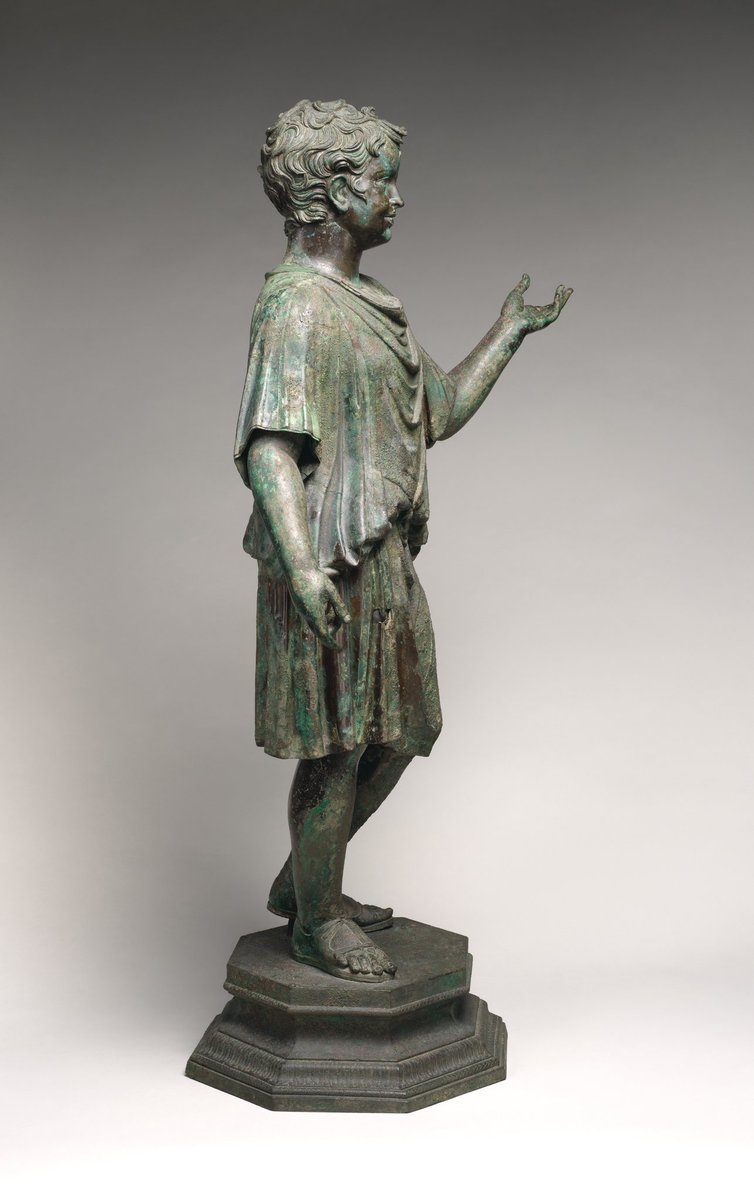
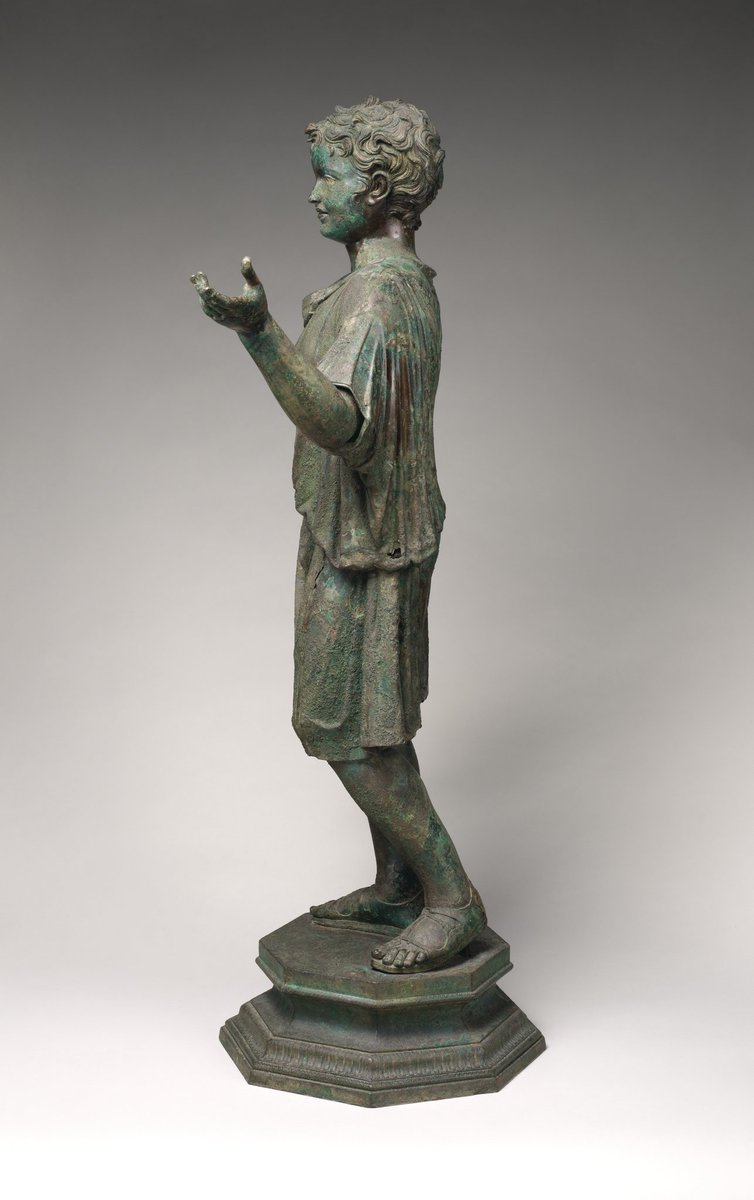
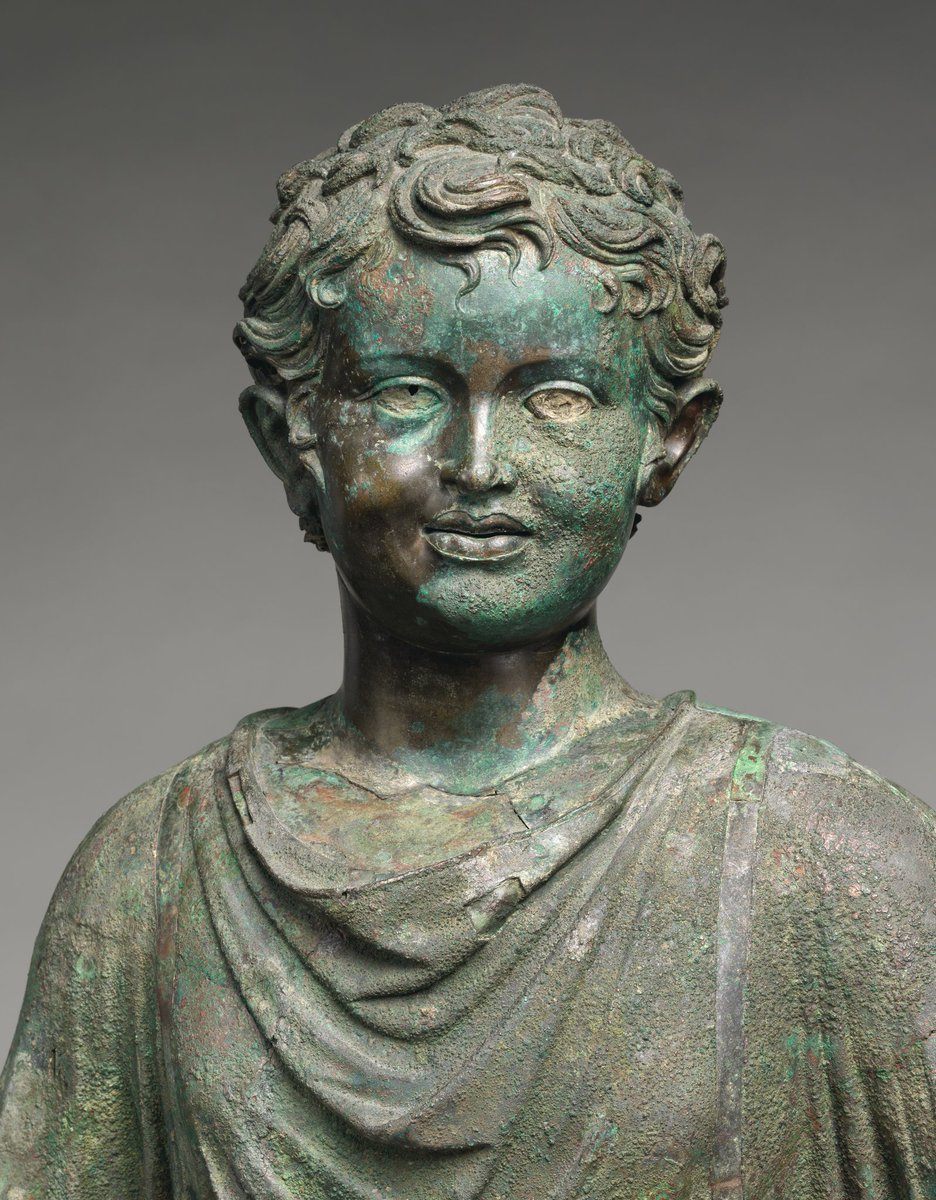
![Marble Gravestone of Alexandra, Athenian priestess of Isis shown in the guise of the goddess. Her dress& #39; central knot is characteristic of Isis cult devotees. Also her 2 ritual objects: situla [ritual bucket] & sistrum (rattle, now missing) AD 125-150, Kerameikos Cemetery, Athens Marble Gravestone of Alexandra, Athenian priestess of Isis shown in the guise of the goddess. Her dress& #39; central knot is characteristic of Isis cult devotees. Also her 2 ritual objects: situla [ritual bucket] & sistrum (rattle, now missing) AD 125-150, Kerameikos Cemetery, Athens](https://pbs.twimg.com/media/EUyEMB2XkAErmSw.jpg)
![Marble Gravestone of Alexandra, Athenian priestess of Isis shown in the guise of the goddess. Her dress& #39; central knot is characteristic of Isis cult devotees. Also her 2 ritual objects: situla [ritual bucket] & sistrum (rattle, now missing) AD 125-150, Kerameikos Cemetery, Athens Marble Gravestone of Alexandra, Athenian priestess of Isis shown in the guise of the goddess. Her dress& #39; central knot is characteristic of Isis cult devotees. Also her 2 ritual objects: situla [ritual bucket] & sistrum (rattle, now missing) AD 125-150, Kerameikos Cemetery, Athens](https://pbs.twimg.com/media/EUyEMhqWoAAexKL.jpg)
![Marble Gravestone of Alexandra, Athenian priestess of Isis shown in the guise of the goddess. Her dress& #39; central knot is characteristic of Isis cult devotees. Also her 2 ritual objects: situla [ritual bucket] & sistrum (rattle, now missing) AD 125-150, Kerameikos Cemetery, Athens Marble Gravestone of Alexandra, Athenian priestess of Isis shown in the guise of the goddess. Her dress& #39; central knot is characteristic of Isis cult devotees. Also her 2 ritual objects: situla [ritual bucket] & sistrum (rattle, now missing) AD 125-150, Kerameikos Cemetery, Athens](https://pbs.twimg.com/media/EUyENEoXkAMk9Y_.jpg)




